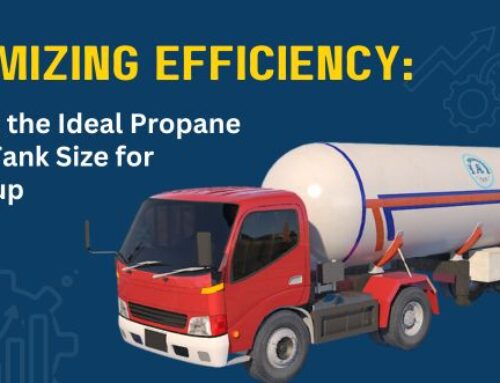Cryogenic tanks are used to store cryogenic liquids – either in a fixed space or for transportation. Since cryogenic liquids exist at low temperatures, usually at -1500 Celsius, they need specialized equipment for transport and storage. It’s not possible to store cryogenic liquids in a standard container. It can make it impossible to handle them and cause safety risks for handling. Cryogenic tanks are built explicitly with durable materials to handle the low temperatures with additional precautions to reduce any chances of leakage.
Standard products in cryogenic tanks include oxygen, nitrogen, hydrogen and helium. Cryogenic tanks can also be used to store gases at higher temperatures, including Liquified Nitrogen Gas (LNG), carbon dioxide and nitrous oxide.
What are Cryogenic Tanks?

The containers known as cryogenic tanks play a significant role in storing and transporting various cryogenic liquids. Cryogenic tanks are thermally insulated to maintain the low temperatures required for cryogenic liquids. The use of a vacuum jacket enables this, and it is usually designed and manufactured as per international standards and design codes.
There are many different types of cryogenic tanks. The static or fixed tanks are used in a dedicated space – usually a cryogenic processing facility. These can also include the small mobile tanks that are mounted on wheels for research or workshops. The small tanks are also known as pressure vessels and are used where direct access to the cryogenic liquid is essential.
Cryogenic tanks are integral in the cryogenic treatment process. Their efficacy isn’t just for transporting or storing cryogenic liquids. They are essential for the deep cryogenic treatment process, wherein metals and plastics are submerged in the cryogenic liquid for up to 24 hours.
Use, Operation and Maintenance of Cryogenic Tanks

Cryogenic tanks must be operated and managed by designated competent professionals. In the case of static tanks, they must undergo regular inspection, routine maintenance and periodic examination. This ensures that the tank is safe for operation at all times between the formally conducted periodic review.
Transportation tanks also require periodic inspection and testing by an authorized body. While cryogenic tanks can be repaired, it must be done by a competent and certified professional following the design codes.
Applications and Benefits of Cryogenic Tanks

Cryogenic tanks are used in multiple applications across India and the globe. They are instrumental in chemical industries, high-pressure oilfield industries, metal processing industries, medical and environmental technologies and water treatment technologies. Since the pandemic, cryogenic tanks have also been helpful for the storage and transportation of oxygen. The dense structure of cryogenic tanks simplifies the usage and reduces maintenance costs. Cryogenic tanks are available in multiple sizes for all kinds of applications and use.
Cryogenic tanks are considered highly efficient – making them the first choice for transportation of cryogenic liquids. There’s an integrated pressure building system in the tanks with an adjustable pressure regulator and economizer.
Since the tanks have a high-quality outer jacket with advanced coating, it curtails the probability of evaporation. There are also provisions to protect the liquids in different environmental conditions. The tanks are durable for prolonged usage and are safe to use even in hazardous industries.
Cryogenic tanks have evolved with new technologies and innovations over the years and continue to grow in value and results.
If you’re looking for cryogenic tanks, Anil Engineering and V. S. Pressure Vessels and Gas Projects Pvt. Ltd. can help you in the entire process – from consultancy to design, manufacturing and completion with installation.
Contact us today to discuss your requirements.




